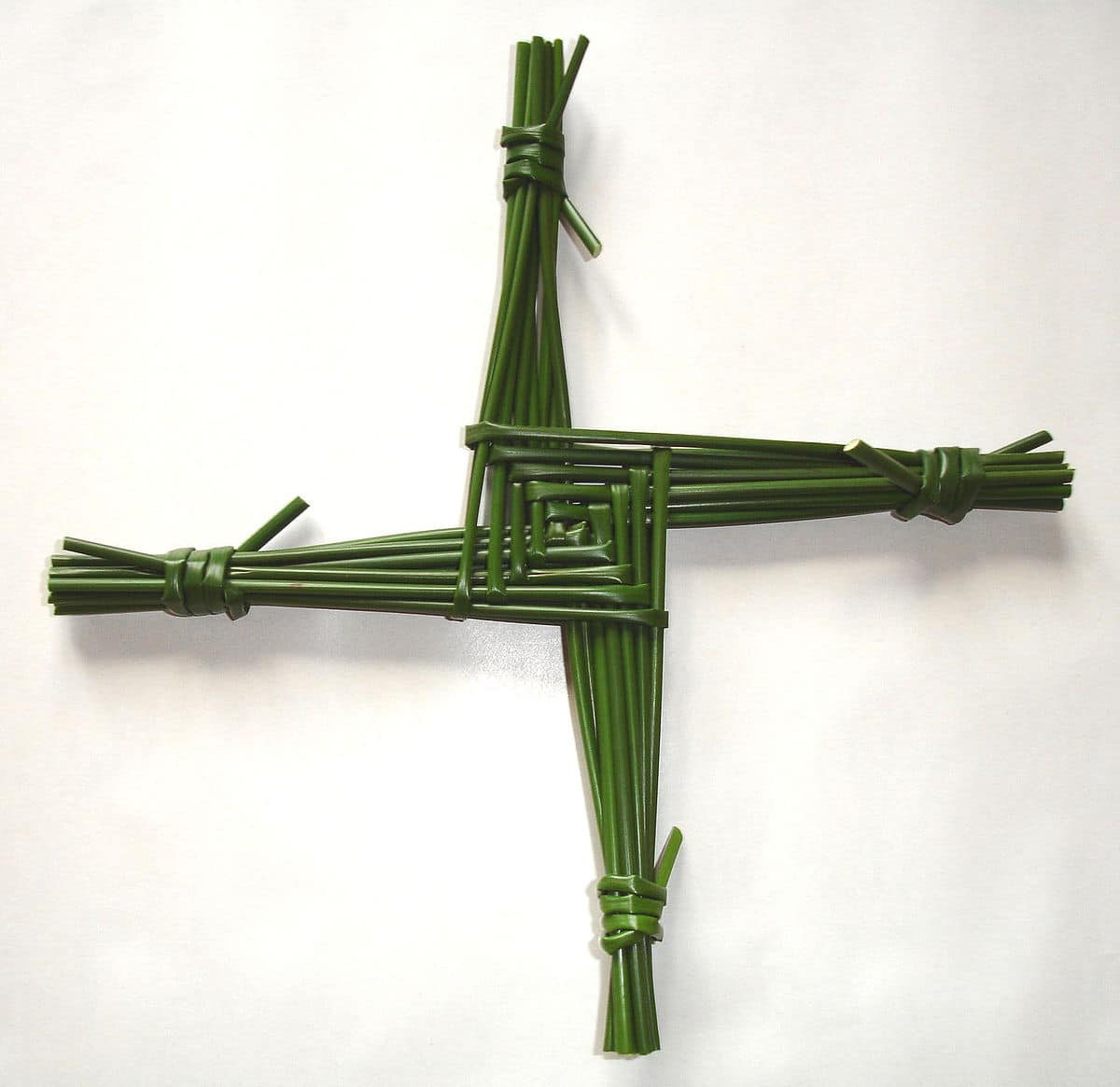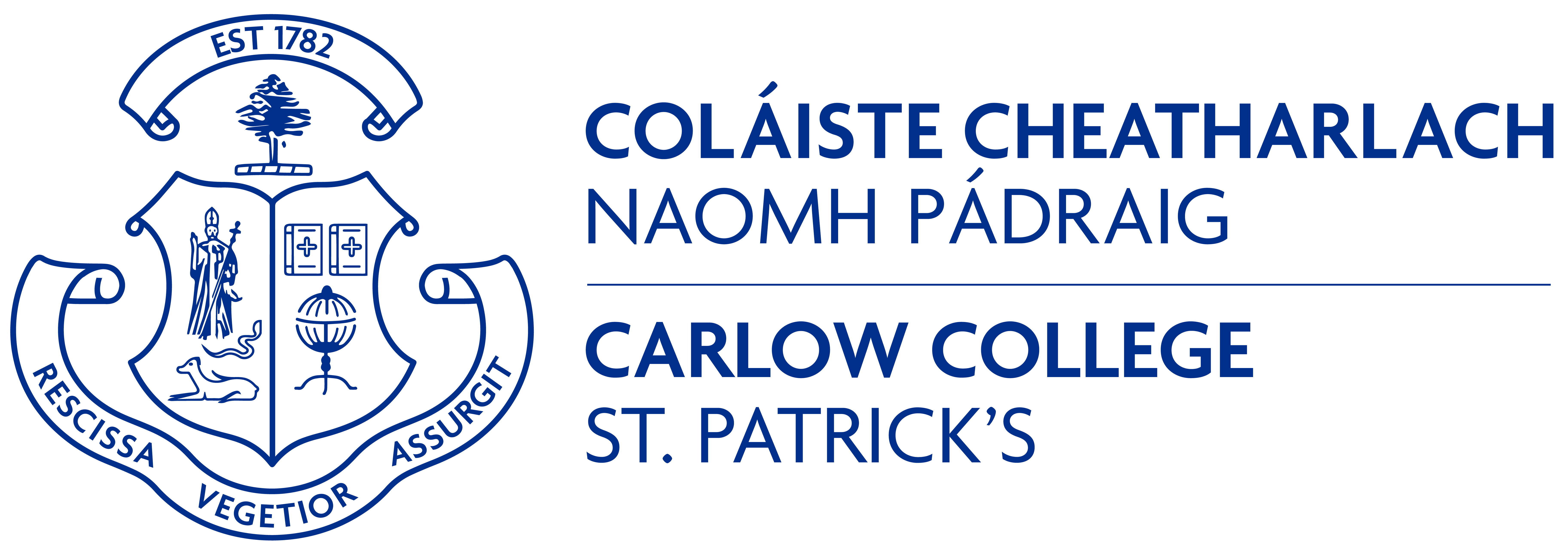As St Brigid’s Day is to be highlighted more prominently as a new bank holiday, history lecturer Dr Elaine Callinan has written a short blog explaining the background and origin stories of Saint Brigid, as sourced by historians.
Saint Brigid’s Day, 1 February
Saint Brigid of Kildare or Brigid of Ireland (c. 451 – 525) is the patroness saint (or ‘mother saint’) of Ireland, and one of its three national saints along with Patrick and Columba. The saint has the same name as the goddess Brigid, meaning ‘exalted one’ from Old Irish. There is debate over whether Brigid was a real person because of the legendary quality of the earliest accounts of her life, and among many secular scholars and Christians over the authenticity of her biographies. Three biographies agree that her mother was Brocca, a Christian Pict slave, who had been baptised by Saint Patrick. They name her father as Dubhthach, a chieftain of Leinster. Dáithí Ó hÓgáin and others suggest that the saint had been the chief druid at the temple of the goddess Brigid, and was responsible for converting it into a Christian monastery, and that after her death, the name and characteristics of the goddess became attached to the saint. Noel Kissane, author of the most comprehensive reference work on historical sources, argues she was a historical figure.
Brigid is known as a goddess of pre-Christian Ireland and appears in Irish mythology as a member of the Tuatha Dé Danann, the daughter of the Dagda and wife of Bres, with whom she had a son named Ruadán. Cormac’s Glossary, written by Christian scribes in the ninth-century and based on earlier sources, describes her as a ‘goddess of poets’ and ‘woman of wisdom’ or sage, who is also famous for her ‘protecting care’. The Lebor Gabála Érenn calls Brigid a poetess and says she had two oxen, Fea and Femen, from whom are named Mag Fea (the plain of the River Barrow) and Mag Femin (the plain of the River Suir). The animals were said to cry out whenever plundering was committed in Ireland, suggesting that Brigid was a guardian goddess of domesticated animals.
Legends of her early holiness include her vomiting when a druid tried to feed her, due to his impurity; and a white cow with red ears appeared to sustain her instead. As she grew older, Brigid was said to have performed miracles, including healing and feeding the poor.
In Christianity, according to tradition, Brigid was born in the year 451AD in Faughart, near Dundalk in County Louth, Ireland. With an initial group of seven companions, she is credited with organising a communal consecrated religious life for women in Ireland. She founded two monastic institutions, one for men, and the other for women, and invited Conleth (Conláed), a hermit from Old Connell near Newbridge, to help her in Kildare as pastor of them. Around 480 she founded a monastery at Kildare on the site of a pagan shrine to the Celtic goddess Brigid. The site was under a large oak tree on the ridge of Drum Criadh.
She died at Kildare on 1 February 525. This date was originally a pagan festival (Imbolc) that marks the beginning of spring. It has been argued that the saint is a Christianization of the goddess; a form of syncretism. According to medievalist Pamela Berger, Christian ‘monks took the ancient figure of the mother goddess and grafted her name and functions onto her Christian counterpart’. Now the 1st February is celebrated as St Brigid’s Day in the Roman Catholic Church, the Eastern Orthodox Church and by the Anglican Communion.
Brigid is celebrated for her generosity to the poor. In her case, most of the miracles associated with her relate to healing and household tasks usually attributed to women. Some include:
- She was reputed to turn water into beer.
- On an occasion when Brigid was travelling to see a doctor for a headache, she stayed at the house of a Leinster couple who had two mute daughters. A touch of Brigid’s blood healed the girls of their muteness.
- One of the more commonly told stories is of Brigid asking the King of Leinster for land. She told the king that the place where she stood was the perfect spot for a convent. It was beside a forest where the members could collect firewood and berries, there was a lake nearby that would provide water and the land was fertile. The king laughed at her and refused to give her any land. Brigid prayed and asked God to soften the king’s heart. Then she smiled at the king and said, ‘Will you give me as much land as my cloak will cover?’ The king thought that she was joking and agreed. She told four of her sisters to take up the cloak, but instead of laying it flat on the turf, each sister, with face turned to a different point of the compass, began to run swiftly, the cloth growing in all directions. The cloak began to cover many acres of land. She said, ‘My cloak is about to cover your whole province to punish you for your stinginess to the poor’. The king replied, ‘Call your maidens back. I will give you a decent plot of ground’. Soon afterward, the king became a Christian, began to help the poor, and commissioned the building of the convent.
Brigidine Sisters in Carlow
In 1807 Daniel Delany, Bishop of Kildare and Leighlin, invited six women to form a religious community in Tullow, Co Carlow on 1st February. He named them the Sisters of St Brigid, after the great fifth-century saint of Kildare. They were Eleanor Tallon, Bridget Brien, Judith Whelan, Margaret Kinsella, Eleanor Dawson and Catherine Doyle – all were natives of Tullow and the surrounding parishes of Ardattin and Clonmore. Bishop Delany insisted that he was not founding a new congregation but rather re-founding the Order of St Brigid of Kildare which had existed in Ireland from the fifth to the sixteenth century until the monasteries were suppressed. In a dramatic move for the time, Delany decided that the Sisters would be obliged by their Institute to mingle with the people in the parish chapel on Sundays and holidays because he thought it better that they should hear the same Mass which the people attended. In this way he felt that they would benefit the people more.
Iconography
In liturgical iconography and statuary Saint Brigid is often depicted holding a reed cross, a crozier of the sort used by abbots, and a lamp. St Brigid’s Cross is a small cross usually woven from rushes. Typically it has four arms tied at the ends and a woven square in the middle.

National Holiday
From 2023, 1 February, St Brigid’s Day, will be a public holiday in the Republic of Ireland – the first named after a woman.
Further knowledge
If you want to learn more about St Brigid or pre-Christian Ireland the history module ‘Re-imagining Early and Medieval Ireland’ on the English and History Degree programme at Carlow College, St Patrick’s covers early Christianity and monasticism in Ireland. For further information, please contact the Programme Director, Dr Simon Workman sworkman@carlowcollege.ie.
Sources:
Berger, Pamela, The Goddess Obscured: Transformation of the Grain Protectress from Goddess to Saint (Boston: Beacon Press, 1985).
Kissane, Noel, Saint Brigid of Kildare: Life, Legend and Cult (Dublin: Four Courts Press, 2017).
Ó Duinn, Seán. The Rites of Brigid (Dublin: Columba Press, 2005).
Ó hÓgáin, Dáithí, Myth, Legend & Romance: An Encyclopaedia of the Irish Folk Tradition (New Jersey: Prentice-Hall Press, 1991).
Power, Ann, The Brigidine Sisters in Ireland, America, Australia and New Zealand, 1807-1922 (Dublin: Four Courts Press, 2018).
Wright, Brian, Brigid: Goddess, Druidess and Saint (Cheltenham, UK: The History Press, 2011).
